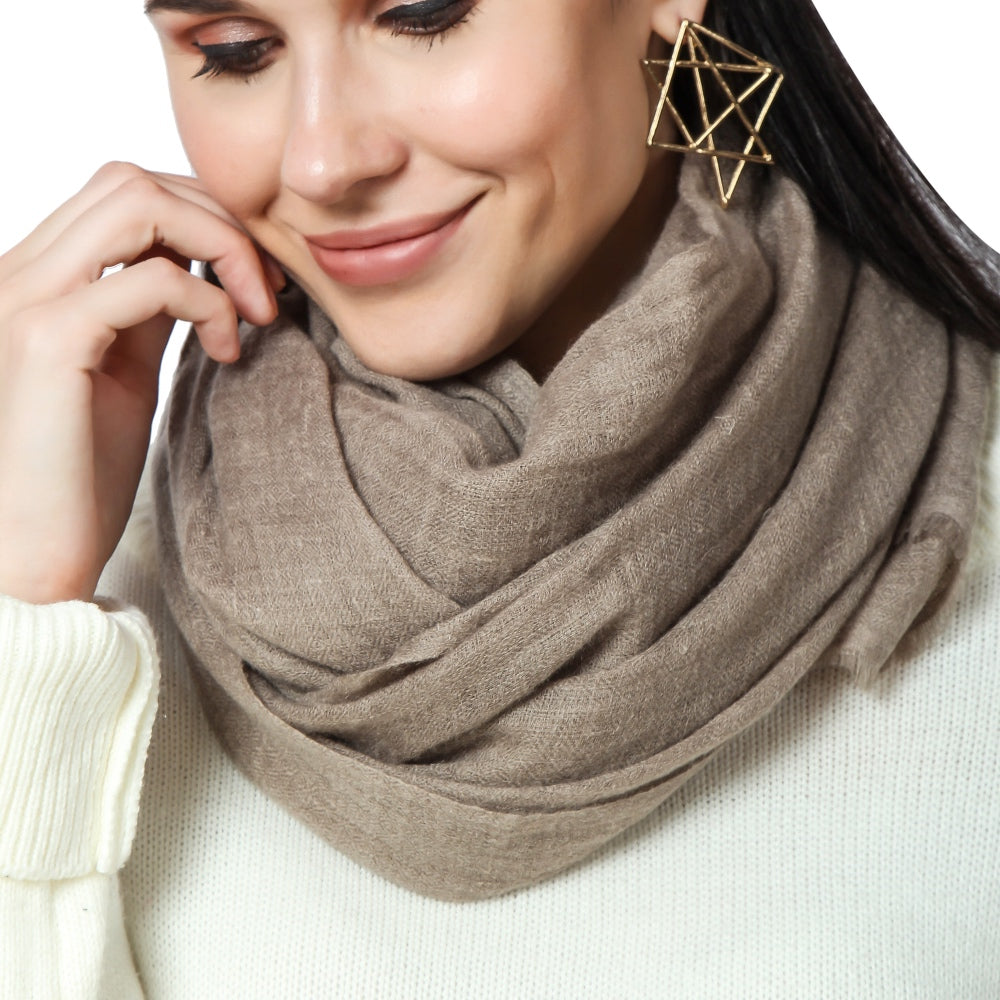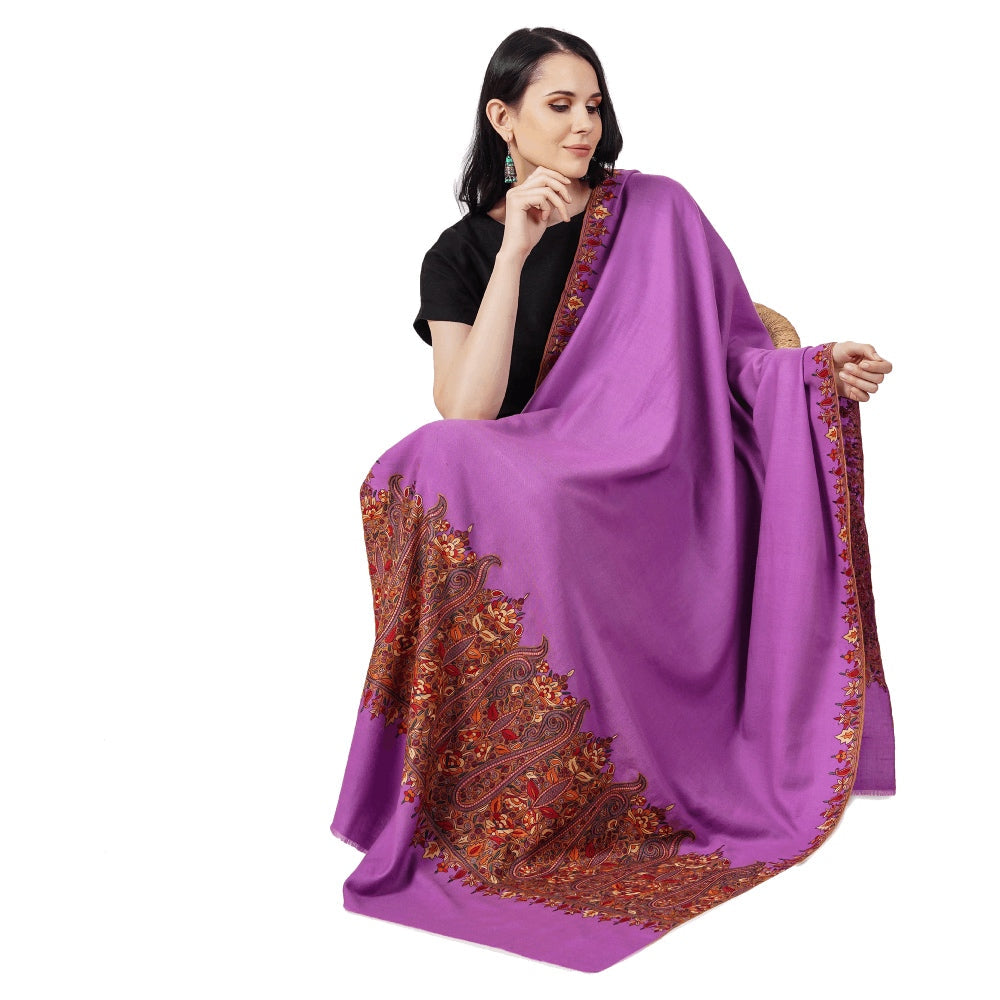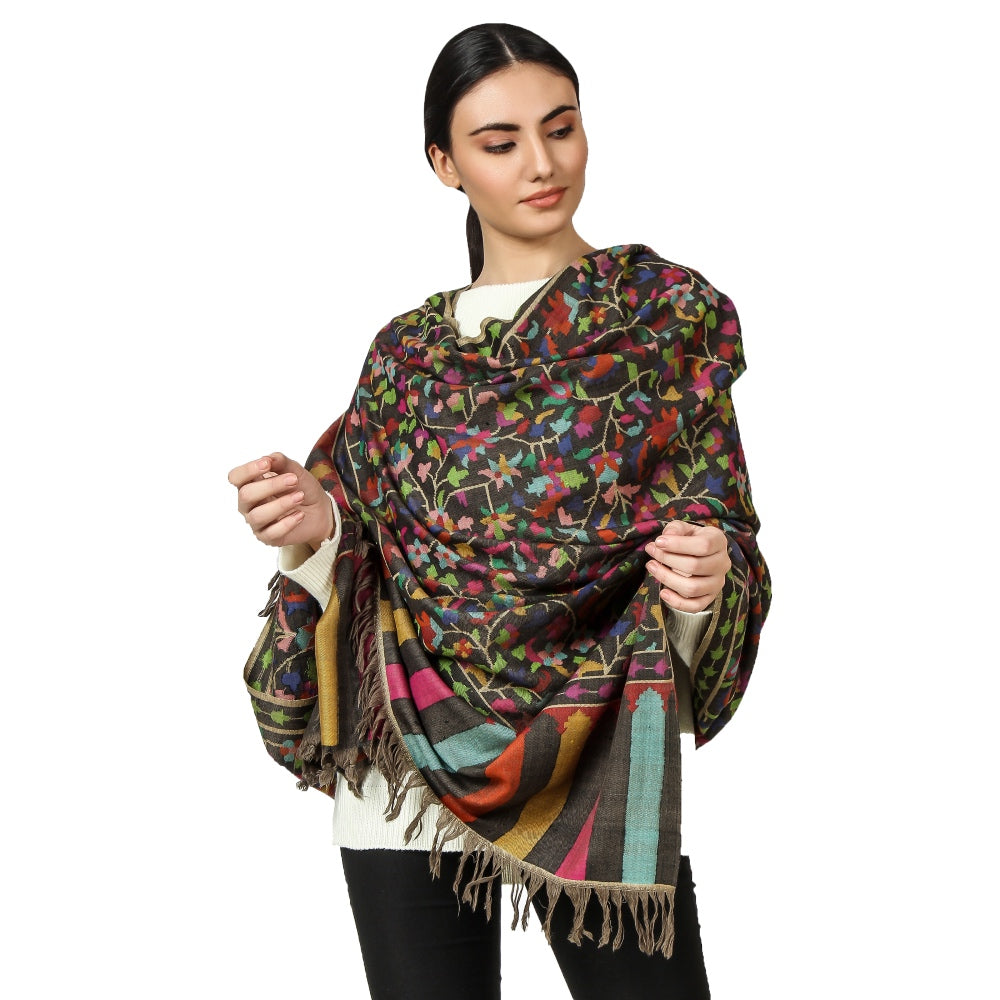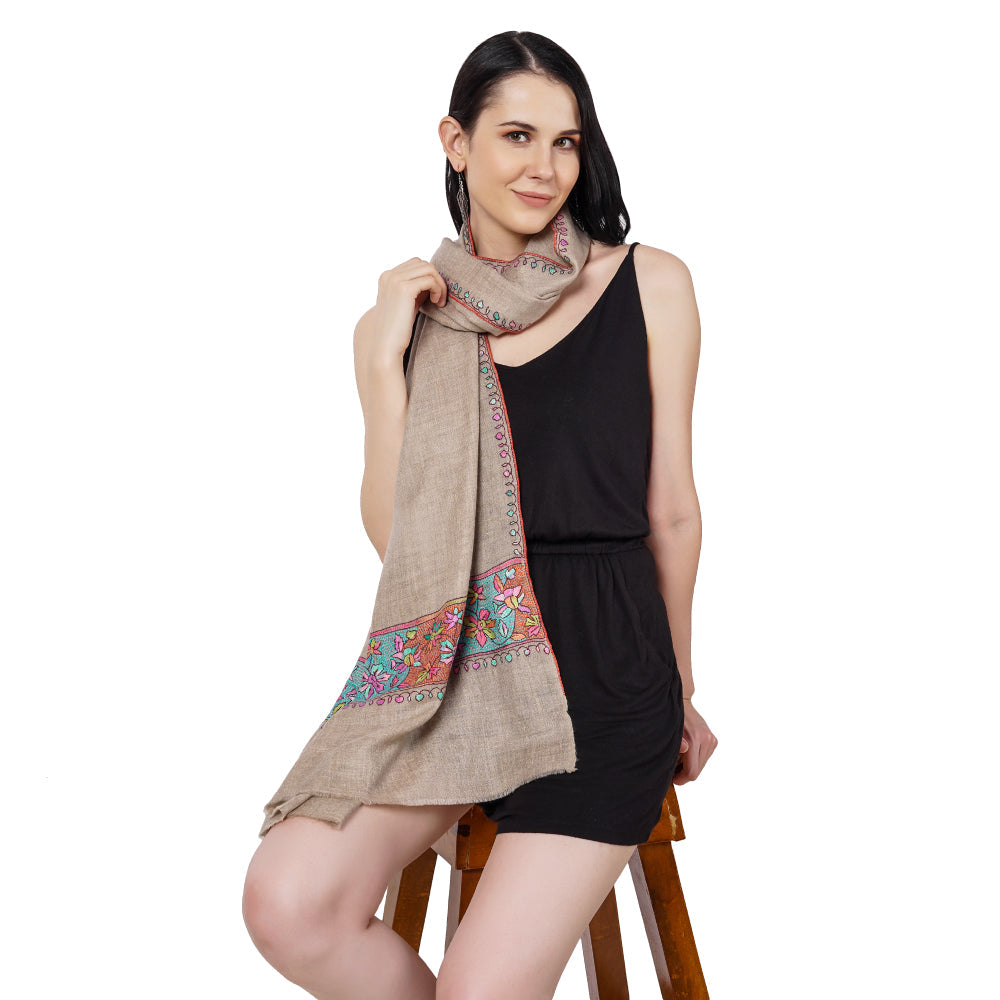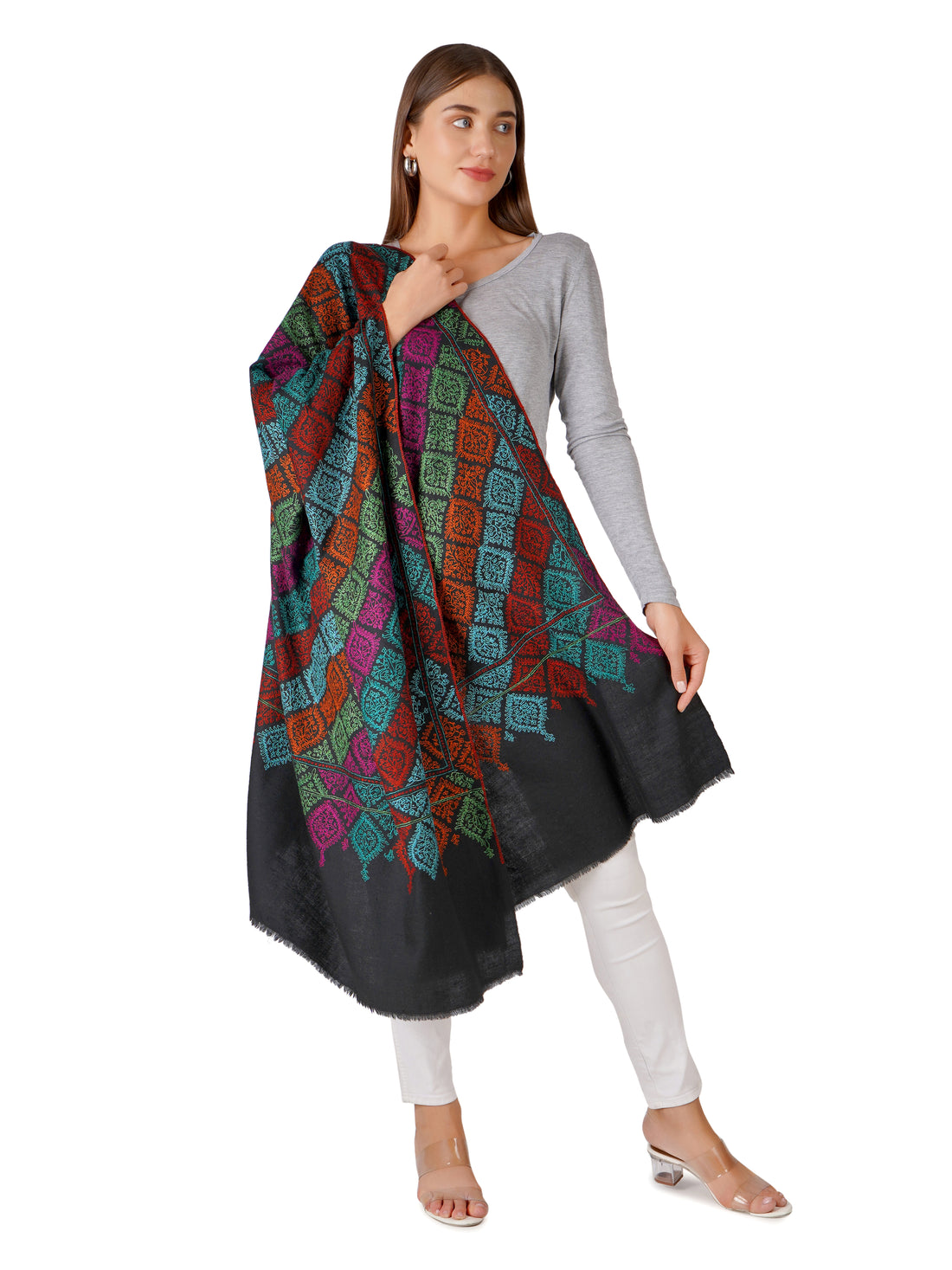
What Are Pashmina Shawls?
Share
Pashmina shawls are the epitome of luxury and timeless elegance. These exquisite wraps, steeped in cultural heritage, have been treasured for centuries as symbols of sophistication and warmth. Whether draped casually or styled for a formal occasion, a Pashmina shawl is more than just an accessory—it’s a statement of refinement and taste.
The Origin of Pashmina

The word “Pashmina” originates from the Persian word “pashm,” which refers to the undercoat of certain breeds of Himalayan goats, specifically the Changthangi or “Pashmina” goat. These goats, native to the high-altitude regions of Ladakh in the Indian Himalayas, produce an incredibly fine and soft wool to endure harsh winters.
Pashmina’s history is deeply intertwined with the rich cultural tapestry of Kashmir, where the art of weaving these shawls has been perfected over centuries. Known as “the soft gold of Asia,” Pashmina was once a prized possession of royalty and nobility, cherished for its unmatched quality and artistry.
What Makes Pashmina Special?
The uniqueness of Pashmina lies in its unparalleled softness, warmth, and lightweight nature. The fibers used to make Pashmina shawls are incredibly fine, measuring between 12 to 14 microns in diameter, making them softer than other types of cashmere.
Pashmina is often compared to regular cashmere, but the distinction is significant. While all Pashmina is cashmere, not all cashmere meets the stringent standards of Pashmina. The meticulous handcrafting process, coupled with the rarity of the raw material, elevates Pashmina to a league of its own.

How Are Pashmina Shawls Made?
Creating a Pashmina shawl is a labor-intensive process that requires exceptional skill and dedication. Here is a step-by-step overview:
-
Collection of Wool: The raw Pashmina wool is carefully combed from the undercoat of the Changthangi goats during their natural molting season.
-
Cleaning and Sorting: The wool is cleaned to remove impurities and sorted by hand to select the finest fibers.
-
Spinning: Using traditional spinning wheels (charkhas), artisans spin the wool into threads. This delicate process demands precision and patience.
-
Weaving: Expert weavers, often following generational techniques, craft the shawls on handlooms. This step can take weeks or even months, depending on the complexity of the design.
-
Dyeing and Embellishment: Natural dyes are used to color the shawls, and intricate embroidery, known as “sozni” or “paper mache,” may be added for embellishment.
How to Identify Authentic Pashmina?
With the rise in demand for Pashmina shawls, the market is flooded with imitations. Here are some tips to ensure you’re investing in a genuine product:
-
Touch and Feel: Authentic Pashmina feels incredibly soft and warm. Imitations often feel rough or synthetic.
-
Burn Test: Genuine Pashmina burns like hair, leaving an ash residue, while fakes made from synthetic fibers melt and emit a plastic-like smell.
-
Price: Pashmina is a luxury item, and its price reflects the quality and craftsmanship. Be wary of overly cheap options.
-
Certification: Look for certifications by Brand to verify authenticity.
Why Are Pashmina Shawls Expensive?
The high cost of Pashmina shawls can be attributed to several factors:
-
Rarity of Material: The wool comes from a specific breed of goats found in a limited region.
-
Labor-Intensive Process: Each shawl is handwoven, requiring weeks or months of meticulous work.
-
Cultural Value: Pashmina carries centuries of heritage and artistry, making it a timeless luxury item.
Investing in a Pashmina shawl means owning a piece of history, unmatched in quality and durability.

Styles and Uses of Pashmina Shawls
Pashmina shawls are versatile and can be styled in numerous ways:
-
Classic Wrap: Drape it over your shoulders for a sophisticated look.
-
Scarf Style: Loop it around your neck for a chic, modern touch.
-
Evening Glamour: Pair it with evening wear for an elegant statement.
Beyond fashion, Pashmina shawls are cherished heirlooms, often passed down through generations.

Sustainability and Ethical Practices
As the demand for sustainable fashion grows, authentic Pashmina aligns perfectly with eco-conscious values. The traditional methods of production are environmentally friendly, and purchasing authentic shawls supports the livelihood of skilled artisans in Kashmir.
By choosing genuine Pashmina, you contribute to preserving an ancient craft while embracing a sustainable and ethical luxury product.
Conclusion
Pashmina shawls are more than just fashion accessories; they are embodiments of elegance, history, and craftsmanship. Whether you’re seeking warmth, style, or a meaningful addition to your wardrobe, a genuine Pashmina shawl offers unparalleled value.
As you explore the world of Pashmina, remember to choose authenticity and quality. By investing in a Pashmina shawl, you’re not just buying a product—you’re embracing a legacy.

